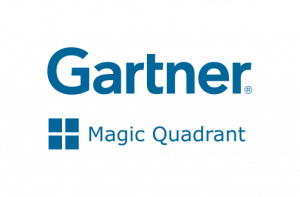Dell IPO Back on the Table
 Dell plans to interview several banks this week to discuss underwriting an IPO, according to media reports.
Dell plans to interview several banks this week to discuss underwriting an IPO, according to media reports.
 Dell plans to interview several banks this week to discuss underwriting an IPO, according to media reports.
Dell plans to interview several banks this week to discuss underwriting an IPO, according to media reports.

The annual meetings of the Internet Governance Forum (IGF) have been consolidated as the main space for discussion and exchange of ideas among the stakeholders of the Internet community on an equal footing. However, there are diverse activities which take place throughout the year that require the participation of all the actors of the community.
The Intersessional Activities
The concept of Dynamic Coalitions (DCs) emerged during the first IGF meeting in 2006. These are informal groups, focused on specific topics that report their activities to the IGF Secretariat each year. Currently, there are 17 active coalitions, which involve diverse topics ranging from accessibility and disability to Internet core values. It is possible to join the work of each of them by accessing the site published by the IGF Secretariat.
On the other hand, following the recommendations of the Working Group on IGF Improvements, the IGF community promoted the creation of the Best Practice Forums (BPFs) as a way to generate more tangible outcomes. For the 2018 cycle, four BPFs were approved; all of them are currently seeking feedback from the community. Some of them have a deadline of September 30, while others will receive contributions until October 15. Continue reading
 The company’s SD-WAN network now is available in 30 countries in North America, Latin America, Europe, and Asia Pacific.
The company’s SD-WAN network now is available in 30 countries in North America, Latin America, Europe, and Asia Pacific.

In the past I have personally given a lot of flack towards Gartner, but that was when I was in a different stage of my career. Over the past two years I’ve transitioned into management, and with that had to learn several valuable lessons. The most important, for me, being expectation management, but that’s for another blog post. The second most important would have to be effectively leveraging resources across all channels. And that’s why I wanted to talk about Gartner.
As an engineer, I found them to be a bit pedantic. They wrote these long winded articles that seemed to never get to the point, i.e. does this product deliver what the company is selling? — A lot of the analysis I’ve seen from Gartner has gotten much better in the past 10-12 years, and while I appreciate that, I think we actually have to thank ourselves for that, rather than Gartner. The freely available content available on blogs, like RouterJockey, has forced anyone hoping to sell content to step up their game. But I digress. My engagements with Gartner always felt generic, I consistently had issues with the amount of knowledge the analyst on the phone had. Continue reading

“Cleansing” cyberspace: Zhuang Rongwen, recently appointed as director of the Cyberspace Administration of China, has vowed to promote “positive energy” on the Internet while suppressing “negative elements,” including “wrong ideological trends” that attack the Communist Party there, reports the South China Morning Post. Zhuang called on all Internet users to join party members to fight a people’s war to rehabilitate the “cyber ecology.”
Told ya so: Meanwhile, another article in the South China Morning Post, this one an opinion piece, defends recent Chinese crackdowns on the Internet by looking at recent U.S. congressional inquiries into ways to “contain the freewheeling online space.” The piece looks at recent outbreaks of fake news and hate speech online. Some U.S. politicians “are starting to sound a lot like China’s leaders when warning of the insidious dangers of an untamed, unregulated internet,” says the writer, a former Washington Post correspondent.
AI arms race: Speaking of fake news, it’s continued spread has triggered an Artificial Intelligence arms race, says Popular Mechanics. Using AI, the spreaders of fake news reports are becoming more difficult to spot. Meanwhile, other companies will increasingly use AI to spot fake news. Perhaps an AI vs. Continue reading


Today we announced support for encrypted SNI, an extension to the TLS 1.3 protocol that improves privacy of Internet users by preventing on-path observers, including ISPs, coffee shop owners and firewalls, from intercepting the TLS Server Name Indication (SNI) extension and using it to determine which websites users are visiting.
Encrypted SNI, together with other Internet security features already offered by Cloudflare for free, will make it harder to censor content and track users on the Internet. Read on to learn how it works.
The TLS Server Name Indication (SNI) extension, originally standardized back in 2003, lets servers host multiple TLS-enabled websites on the same set of IP addresses, by requiring clients to specify which site they want to connect to during the initial TLS handshake. Without SNI the server wouldn’t know, for example, which certificate to serve to the client, or which configuration to apply to the connection.
The client adds the SNI extension containing the hostname of the site it’s connecting to to the ClientHello message. It sends the ClientHello to the server during the TLS handshake. Unfortunately the ClientHello message is sent unencrypted, due to the fact that client and server don’t share Continue reading


Cloudflare launched on September 27, 2010. Since then, we've considered September 27th our birthday. This Thursday we'll be turning 8 years old.
Ever since our first birthday, we've used the occasion to launch new products or services. Over the years we came to the conclusion that the right thing to do to celebrate our birthday wasn't so much about launching products that we could make money from but instead to do things that were gifts back to our users and the Internet in general. My cofounder Michelle wrote about this tradition in a great blog post yesterday.
Personally, one of my proudest moments at Cloudflare came on our birthday in 2014 when we made HTTPS support free for all our users. At the time, people called us crazy — literally and repeatedly. Frankly, internally we had significant debates about whether we were crazy since encryption was the primary reason why people upgraded from a free account to a paid account.
But it was the right thing to do. The fact that encryption wasn't built into the web from the beginning was, in our mind, a bug. Today, almost exactly four years later, the web is nearly 80% encrypted thanks to Continue reading
Whether on a corporate or public Wi-Fi network, there are precautions you can apply to keep your network and systems better protected and your information secured.
The post QoS Policy and its propagation via BGP (QPPB) appeared first on Noction.
One of the attendees of my Building Next-Generation Data Center online course tried to figure out whether you can build larger broadcast domains with VXLAN than you could with VLANs. Here’s what he sent me:
I'm trying to understand differences or similarities between VLAN and VXLAN technologies in a view of (*cast) domain limitation.
There’s no difference between the two on the client-facing side. VXLAN is just an encapsulation technology and doesn’t change how bridging works at all (read also part 2 of that story).
Read more ...Smoke: fine-grained lineage at interactive speed Psallidas et al., VLDB’18
Data lineage connects the input and output data items of a computation. Given a set of output records, a backward lineage query selects a subset of the output records and asks “which input records contributed to these results?” A forward lineage query selects a subset of the input records and asks, “which output records depend on these inputs?”. Lineage-enabled systems capture record-level relationships throughout a workflow and support lineage queries.
Data lineage is useful in lots of different applications; this paper uses as its main example interactive visualisation systems. This domain requires fast answers to queries and is typically dominated by hand-written implementations. Consider the two views in the figure below. When the user selects a set of marks in , marks derived from the same records are highlighted in
(linked brushing).

A typical visualisation system implements this manually, but it can equally be viewed as a backward lineage query from the selection points in , followed by a forward lineage query from the resulting input records to
.
(See ‘Explaining outputs in modern data analytics’ which we looked at last year for an introduction Continue reading
| Cloud networking has become buzz now days, Cloud networking is term use to define the group of network resources and services available which can be shared among various client and customers.This can be a private cloud or a public cloud . The entire network is on cloud, which can be used to provide connectivity between application ,resources ,services deployed in the cloud. There are multiple cloud provider in market today, some of the well known cloud provider are Amazon AWS,Microsoft Azure,Google cloud Platform,IBM and multiple other vendors. According to a recent Cloud Security Alliance (CSA) report ,Amazon Web Services is the most popular public cloud platform (41.5% ) . |

Here we will go through the basics Amazon Virtual Private Cloud or VPC :Its virtually isolated networks ,they cannot communicate to each other ,to external world,internet ,to a VPN without explicitly granting that ability.we create VPC per account per region basis.Lets first understand about the few terms related to AWS .
Amazon EC2 : :Amazon Elastic Compute Cloud (Amazon EC2) provides scalable computing capacity in the Amazon Web Services (AWS) cloud. Using Amazon EC2 eliminates your need to invest in hardware up front, so you can develop and deploy applications Continue reading
Personal websites are weird. We are mostly past the era of having them, as things like twitter and hosted blog services like Medium have taken them over, but I’m a hold out. I run both my own blog, and have a landing page


I have always loved birthdays. It is a chance to get together with loved ones, a chance to have fun and a chance to reflect on anything you want to keep doing or change in the upcoming year. At Cloudflare, we’ve embraced celebrating our birthday as well.
This week, Cloudflare turns 8 years old. It feels like just yesterday that Matthew, Lee, Matthieu, Ian, Sri, Chris, Damon and I stepped on stage at Techcrunch Disrupt to launch Cloudflare to the world. Since then, we have celebrated our birthday every year by giving a gift back to our customers and the Internet. This year, we plan to celebrate each day with a new product benefiting our community. Or in other words, it is a weeklong birthday celebration. Like I said, I love birthdays!

The Cloudflare team when we launched the service at Techcrunch Disrupt during September 27 to 29, 2010 – Matthieu, Chris, Sri, Ian, Lee, Matthew, Michelle and Damon.
While I can’t share exactly what we’re releasing every day — after all who doesn’t like a surprise? — I wanted to share some thoughts on how we decide what to release birthday week.
Our mission at Cloudflare is to help Continue reading
If you manage Internet number resources in the APNIC Whois Database, you are requested to provide contact information so that people can contact you for network abuse or troubleshooting. You and your colleagues might have created person objects for this purpose. However, from time to time a person performing a role may change. If you have a lot of resource contacts to manage, updating person contacts can Continue reading
It is 6 years since I passed the CCIE Lab Exam. The dreaded email has arrived:
CCIE: Your CCIE status is ‘suspended’ and you need to recertify in twelve months.
Time to re-evaluate what the CCIE means to me. Should renew it? Should people start out on the CCIE track now? My opinions have shifted over the years.
I’ve been through this cycle a few times now. I’m getting closer to Emeritus, but it’s still a few years away.
My career has shifted over the last few years. I work for a Network Vendor, but networking is only part of what I do. I am a Product Manager, focused on automation. I spend very little time looking at network devices, or CLI. I spend my time talking to customers, updating roadmaps, writing Python, reviewing Pull Requests.
My future will be working with technologies like Serverless Computing, IoT, and Edge.
CCIE R&S doesn’t cover any of that.
It is unlikely that I will ever work as a traditional hands-on network engineer again. Not impossible, but unlikely. I doubt that any future employer will care about whether I have a current CCIE certification. At this point my experience Continue reading
It is 6 years since I passed the CCIE Lab Exam. The dreaded email has arrived:
CCIE: Your CCIE status is ‘suspended’ and you need to recertify in twelve months.
Time to re-evaluate what the CCIE means to me. Should renew it? Should people start out on the CCIE track now? My opinions have shifted over the years.
I’ve been through this cycle a few times now. I’m getting closer to Emeritus, but it’s still a few years away.
My career has shifted over the last few years. I work for a Network Vendor, but networking is only part of what I do. I am a Product Manager, focused on automation. I spend very little time looking at network devices, or CLI. I spend my time talking to customers, updating roadmaps, writing Python, reviewing Pull Requests.
My future will be working with technologies like Serverless Computing, IoT, and Edge.
CCIE R&S doesn’t cover any of that.
It is unlikely that I will ever work as a traditional hands-on network engineer again. Not impossible, but unlikely. I doubt that any future employer will care about whether I have a current CCIE certification. At this point my experience Continue reading